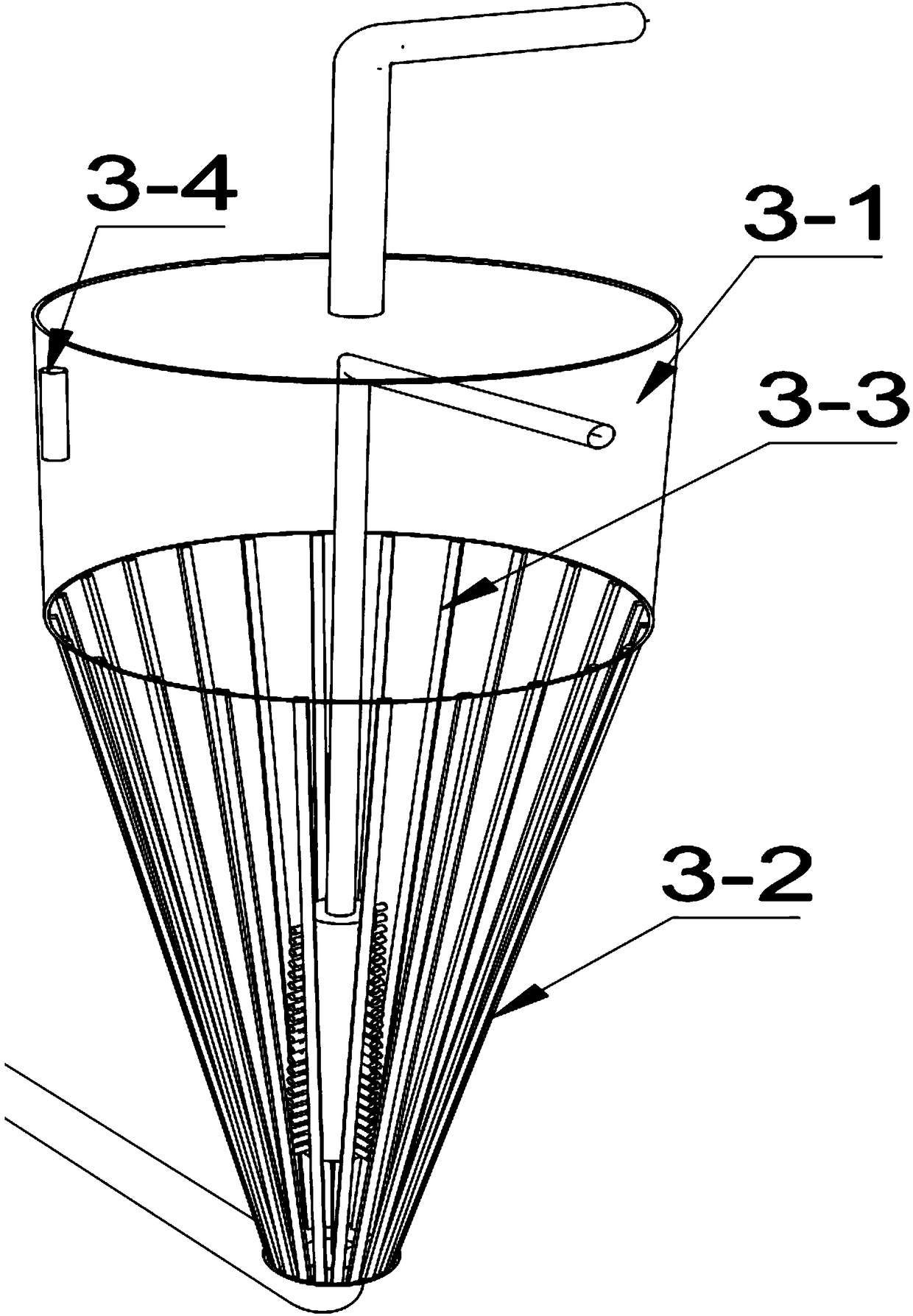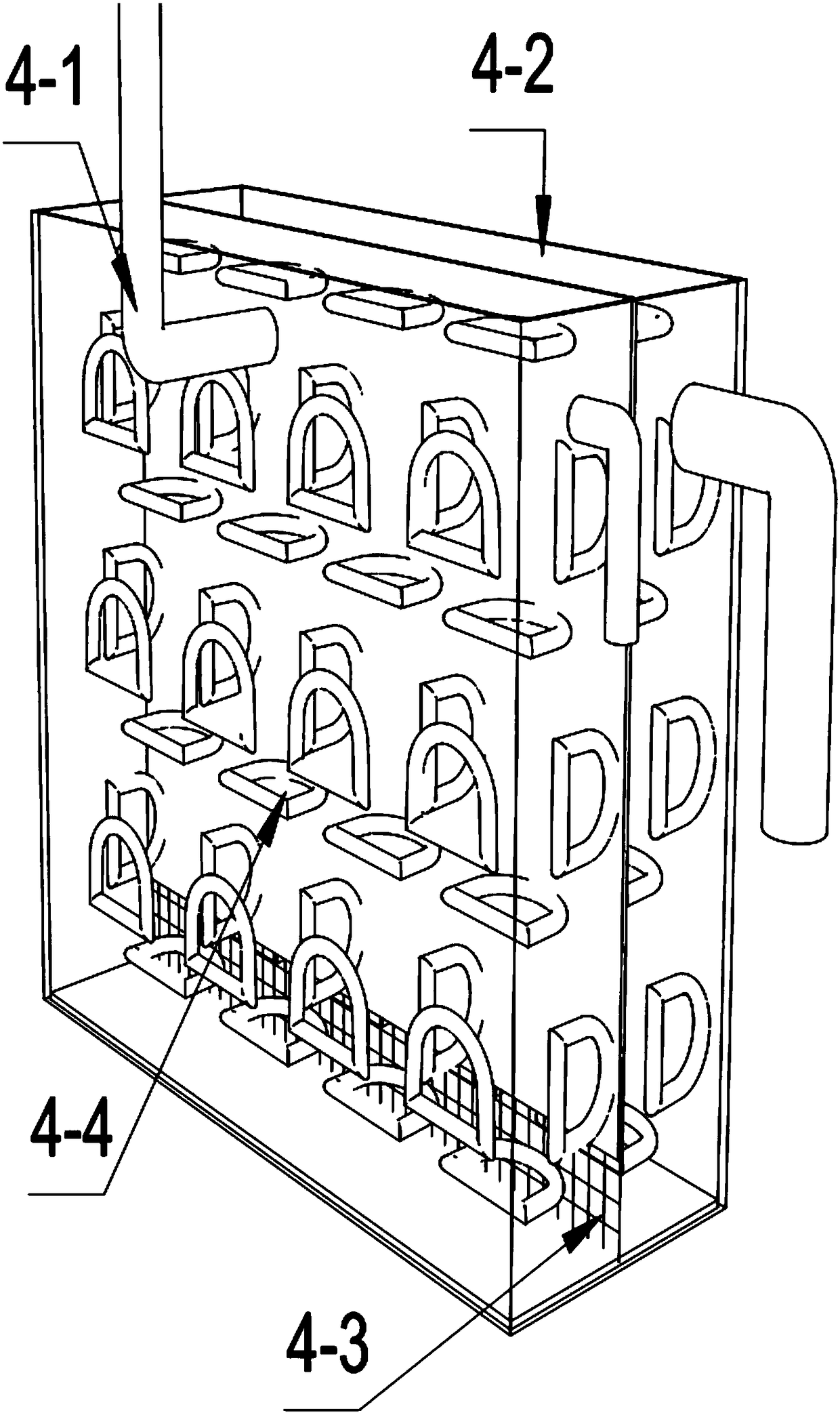A cyclone aeration method for treating carbon tetrachloride in groundwater and its removal method
A carbon tetrachloride and groundwater technology, applied in biological treatment devices, chemical instruments and methods, contaminated groundwater/leachate treatment, etc., can solve the problems of short effective adsorption life, high cost of nanotechnology, lack of oxygen, etc. To achieve the effect of compact and practical equipment, scientific processing method and small footprint
- Summary
- Abstract
- Description
- Claims
- Application Information
AI Technical Summary
Problems solved by technology
Method used
Image
Examples
Embodiment 1
[0061] In parts by weight, and according to the following steps to manufacture the polymer mediated filler 4-4 of the present invention:
[0062]Step 1. Add 500 parts of ultrapure water with a conductivity of 0.005μS / cm into the reactor, start the stirrer in the reactor at a speed of 100rpm, and start the heating pump to raise the temperature in the reactor to 60°C; add in sequence 5 parts of ethyl glycolate, 5 parts of ethyl lactate, and 5 parts of ethyl oleate were stirred until completely dissolved, the pH value was adjusted to 6.5, the speed of the agitator was adjusted to 50 rpm, the temperature was 40°C, and the esterification reaction was carried out for 2 hours;
[0063] Step 2: Take 20 parts of ethyl propionate and 5 parts of ethyl n-heptanoate for crushing, the particle size of the powder is 200 mesh; add 100 parts of nano-level palladium borate and mix evenly, spread it on the tray, the thickness of the laying is 5mm , using α-ray irradiation with a dose of 1.0kGy a...
Embodiment 2
[0069] In parts by weight, and according to the following steps to manufacture the polymer mediated filler 4-4 of the present invention:
[0070] Step 1. Add 1500 parts of ultrapure water with a conductivity of 0.04μS / cm into the reactor, start the stirrer in the reactor at a speed of 150rpm, and start the heating pump to raise the temperature in the reactor to 90°C; add in sequence 10 parts of ethyl glycolate, 15 parts of ethyl lactate, and 10 parts of ethyl oleate were stirred until completely dissolved, and the pH value was adjusted to 8.0. The speed of the agitator was adjusted to 80 rpm, the temperature was 50°C, and the esterification reaction was carried out for 9 hours;
[0071] Step 2: Take 30 parts of ethyl propionate and 10 parts of ethyl heptanoate for crushing, the particle size of the powder is 450 mesh; add 150 parts of nano-scale palladium borate and mix evenly, spread it on the tray, the thickness of the laying is 15mm , irradiate with α-rays with a dose of 2....
Embodiment 3
[0077] In parts by weight, and according to the following steps to manufacture the polymer mediated filler 4-4 of the present invention:
[0078] Step 1. Add 600 parts of ultrapure water with a conductivity of 0.0058μS / cm into the reactor, start the stirrer in the reactor at a speed of 140rpm, and start the heating pump to raise the temperature in the reactor to 68°C; 8 parts of ethyl glycolate, 8 parts of ethyl lactate, 8 parts of ethyl oleate, stir until completely dissolved, adjust the pH value to 6.8, adjust the speed of the stirrer to 58rpm, the temperature is 48°C, and the esterification reaction takes 8 hours;
[0079] Step 2: Take 28 parts of ethyl propionate and 8 parts of ethyl heptanoate for crushing, the particle size of the powder is 280 mesh; add 140 parts of nano-scale palladium borate and mix evenly, spread it on the tray, the thickness of the laying is 10mm , using α-ray irradiation with a dose of 1.4kGy and an energy of 1.25MeV for 25min;
[0080] The third ...
PUM
| Property | Measurement | Unit |
|---|---|---|
| diameter | aaaaa | aaaaa |
| particle diameter | aaaaa | aaaaa |
| particle size (mesh) | aaaaa | aaaaa |
Abstract
Description
Claims
Application Information
 Login to View More
Login to View More - R&D
- Intellectual Property
- Life Sciences
- Materials
- Tech Scout
- Unparalleled Data Quality
- Higher Quality Content
- 60% Fewer Hallucinations
Browse by: Latest US Patents, China's latest patents, Technical Efficacy Thesaurus, Application Domain, Technology Topic, Popular Technical Reports.
© 2025 PatSnap. All rights reserved.Legal|Privacy policy|Modern Slavery Act Transparency Statement|Sitemap|About US| Contact US: help@patsnap.com



